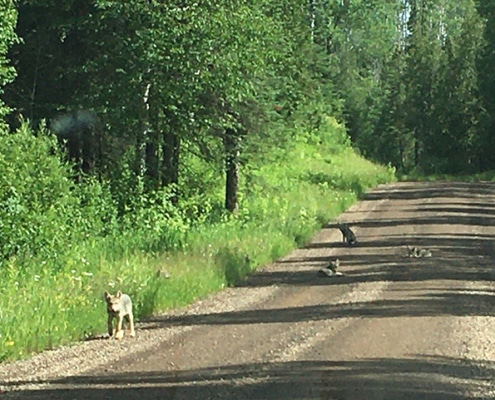Let wildlife remain wild, and remain alive

This photograph was taken in July 2020 along a gravel road in northern Minnesota.
Occasionally, people see both adult wolves or pups on a roadway. Naturally, people get very excited when they see wildlife and want to stop, take pictures, and hopefully watch them for a while. This very scenario played out in July 2020 when a group of six wolf pups appeared near a road in northeastern Minnesota. Before long, residents of the area were asking where the pups were spotted so they could go take a look, too.
- Don’t feed wildlife (EVER!), either by offering them food or leaving food sources out around your property;
- Don’t let wolves get close to you and don’t let them be comfortable in human-inhabited areas;
- If a wolf approaches, try to scare it off by making loud noises, waving your hands, and making yourself look large;
- Report animals to your local wildlife officials that are acting in an aggressive or sick manner, or if an animal continually approaches people.
Following these tips will keep you safer and will keep wildlife safer. In fact, many wolves have been killed because they’ve lost their fear of humans.
Here are recent examples of habituated wolves that have been killed.

